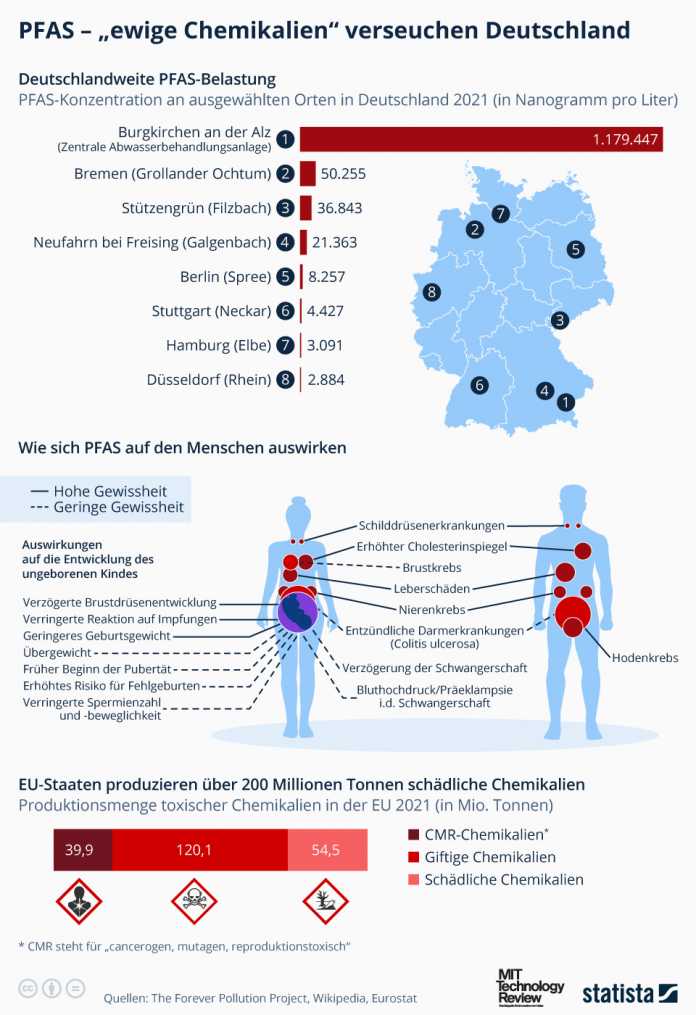High levels of PFAS (perfluorinated and polyfluorinated alkyl substances) can be detected at various locations throughout Germany. This group of chemicals is man-made and does not occur naturally. PFAS are used, for example, in water-repellent jackets, frying pans or packaging. They enter the food chain, blood and tissues of humans and animals through contaminated soil and water, where they can survive for several decades. PFAS are suspected to promote cancer, infertility and immune deficiencies – since humans cannot smell or taste them, they are particularly dangerous.
According to research by NDR, WDR and SZ, there are more than 1,500 contaminated places in Germany. As the graphic, which was created in cooperation with Statista and MIT Technology Review, shows, the waters of most large cities in this country have a significant PFAS contamination. In Düsseldorf on the Rhine, for example, more than 2800 nanograms per liter were found – in the Berlin Spree even more than 8000. The maximum value of the PFAS load was measured in the central wastewater treatment plant of the Gendorf chemical park in Burgkirchen an der Alz in Bavaria. However, there are also three PFAS producers at this location: 3M, WL Gore and Archroma.

Danger potential of PFAS
According to the Forever Pollution Project, there are a total of six PFAS-producing factories in Germany – more than in any other country in Europe. According to their own statements, these comply with the regulations, but the potential danger for humans and the environment must be taken seriously in view of the longevity of the chemicals. 3M therefore intends to stop producing these substances by 2025.
(Bild: shutterstock/3dmask )
In our weekly column we present numbers, curves and diagrams from technology and science.
The production of toxic and harmful chemicals in Europe has been at a consistently high level for years. According to Eurostat, more than 200 million tons of these substances were produced in 2021. In particular, CMR chemicals, i.e. those that are carcinogenic, mutagenic and toxic to reproduction, reached a ten-year high with a quantity of 39.9 million tons.
In the case of PFAS, remediation of contaminated areas is almost impossible and involves enormous costs. However, a ban by the EU is not expected until 2025 at the earliest.

(jl)
